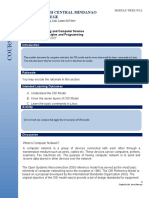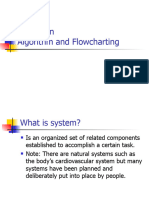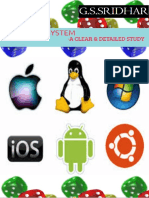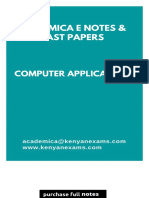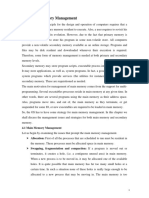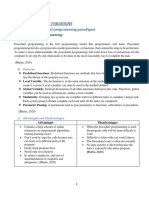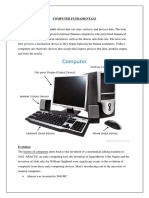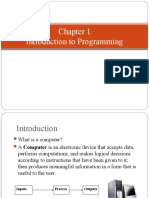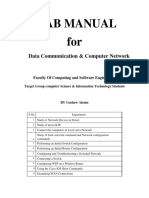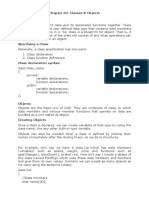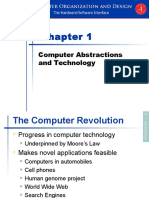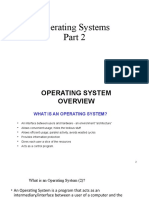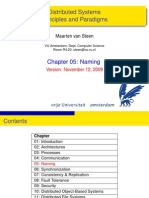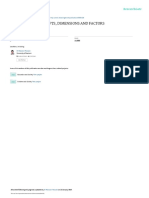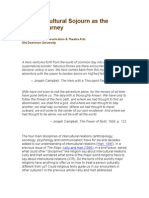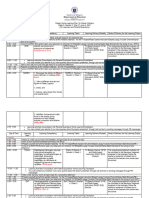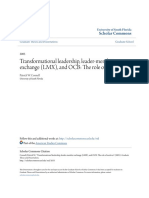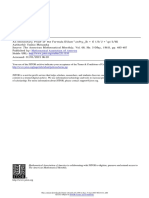0% found this document useful (0 votes)
164 views45 pagesICT S112 Introduction To Programming Concepts
This document provides an introduction to programming concepts. It discusses human vs computer languages, definitions of computer programs and programming languages. It also covers different levels and generations of programming languages including machine languages, assembly languages, and higher-level languages. The document explains structured programming vs object-oriented programming approaches and describes translators like assemblers, compilers, and interpreters. It defines source code, object code, and the roles of preprocessors and linkers. Finally, it lists five qualities of a good program including being bug-free.
Uploaded by
DARTH VADERCopyright
© © All Rights Reserved
We take content rights seriously. If you suspect this is your content, claim it here.
Available Formats
Download as PPTX, PDF, TXT or read online on Scribd
0% found this document useful (0 votes)
164 views45 pagesICT S112 Introduction To Programming Concepts
This document provides an introduction to programming concepts. It discusses human vs computer languages, definitions of computer programs and programming languages. It also covers different levels and generations of programming languages including machine languages, assembly languages, and higher-level languages. The document explains structured programming vs object-oriented programming approaches and describes translators like assemblers, compilers, and interpreters. It defines source code, object code, and the roles of preprocessors and linkers. Finally, it lists five qualities of a good program including being bug-free.
Uploaded by
DARTH VADERCopyright
© © All Rights Reserved
We take content rights seriously. If you suspect this is your content, claim it here.
Available Formats
Download as PPTX, PDF, TXT or read online on Scribd
/ 45

